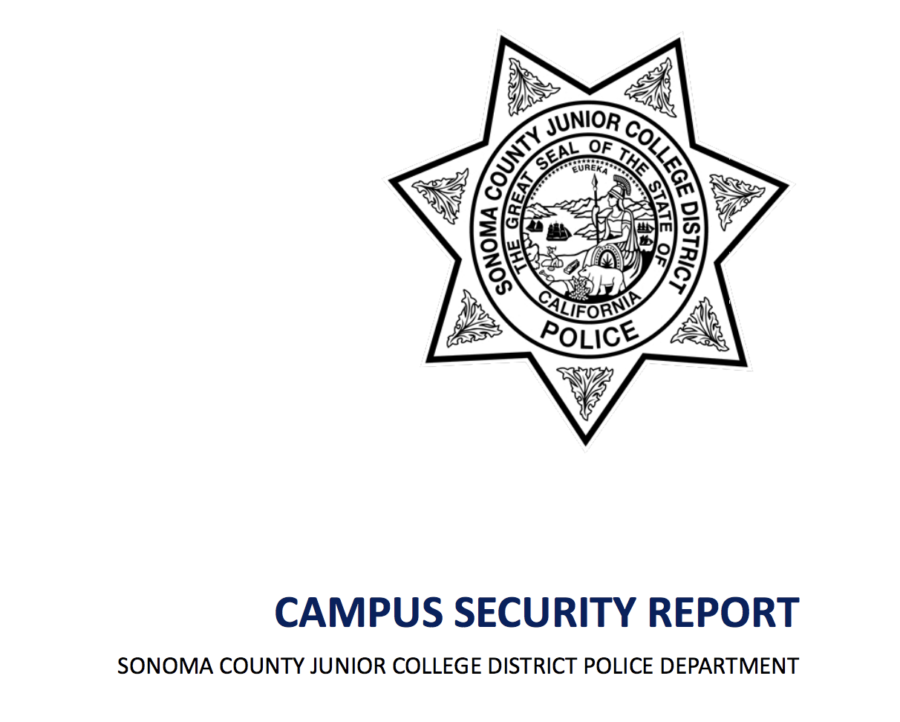The Santa Rosa Junior College District Police released the annual Clery Report showing all crimes committed on SRJC’s campuses over the past three years.
The federal Clery Act requires all colleges to publish an annual report by Oct. 1 each year that contains three years of crime statistics and statements that include sexual assault policies to assure basic victims’ rights, the law enforcement authority of campus police and where the students should go to report crimes.
SRJC Police Chief Robert Brownlee further described the Clery Report as a way to make colleges and police departments transparent with regards to significant crimes so that students make informed decisions about the schools they choose to go to. It lists incidents of homicide, sexual assault, aggravated assault and other serious crimes that occurred the previous three years – in this case, 2017, 2016 and 2015.
When asked how students can use the Clery Report to enhance their own safety on campus, Brownlee said, “Give it a read. I know it’s long. It’s 83 pages long, and statistics are part of it, but it has information about what the police department is, what campus safety is, and in the back it has the district policies.”
While the tally of crimes on the report is generally low—zero rapes, four cases of fondling, one aggravated assault and two cases of dating violence for all of 2017—Brownlee said that long-term crime trends on SRJC campus include a possible bump in sexual assaults. He believes the #MeToo movement is empowering victims to more readily come forward and report sex crimes.
Brownlee said another important resource for students is the Clery Crime Log, adding that in many ways the log is easier to read than the Clery Report. It is updated regularly and lists all crimes logged by the SRJC police department.
According to the crime log, the two most common crimes on campus are property theft and vandalism. Brownlee said theft usually involves crimes of opportunity such as people stealing from unlocked cars or walking away with unattended items, while vandalism usually means bathroom graffiti.
Bench warrant arrests also figure prominently in the log. Brownlee said they usually involve transients or homeless people on Mendocino Avenue who have failed to appear in court for a prior citation. Possession of illegal substances, including meth, cocaine, heroin and prescription medication is also one of the more common crimes the log lists.
All of which brings up the question, just how do SRJC students feel about campus safety?
“I feel safe on campus. I’m never around campus when it’s dark though, because I don’t take any night classes,” said Evelina Hilding, 20.
“Since I’ve been here there have been a few notable events, like a woman being mugged, another kind of crazy sex predator guy—that made me aware of the fact that we are in an urban center that is an open campus,” said Eric Leuschner, 45.
While the campus is generally safe, police said students, faculty, staff and visitors should follow basic safety precautions in order to help minimize crime.
Brownlee urged students to attend the Campus Safety Presentation from noon to 1:30 p.m. on Oct 31. at the Student Activity Center at Bertolini Hall. Students can ask questions, and find out how to maximize their safety at this annual event.




